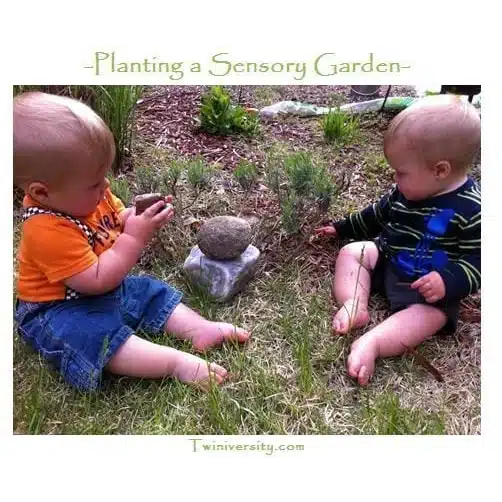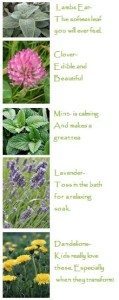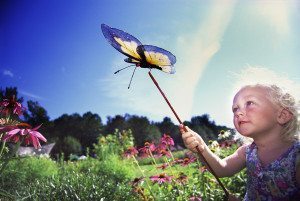Last updated on May 27th, 2024 at 08:39 pm
Want to enjoy the outdoors with your babies and tots in a fun, safe and educational way? Then why not plant a sensory garden that encourages them to touch, taste, smell, and enjoy the outdoors. This type of garden is designed to be completely kid friendly, with plants that can take being walked on, are safe to eat, have a variety of colors, textures, and smells, and that are useful outside of the garden too.
Children of all ages can enjoy. Babies can be introduced to new smells by having their caregiver rub the plant between their fingers to get the oils on them, and then allow the baby to smell them. This is especially fun with strong smells such as rosemary, mint, lemon balm, lavender, or basil. Toddlers can enjoy exploring the sensory garden by toddling walking or crawling among the plants, touching soft lambs ears or rough thyme plants, and being allowed to taste some plants such as edible flowers like dandelions, violets, clover, chives, and broccoli flowers. School age children will enjoy taking care of the garden alongside you by choosing seeds, planting and watering, and making art for the garden such as wind chimes, wind socks, paintings, or sculptures, and helping to harvest.
The garden can be very useful if you plan it well. Planting herbs of all kinds can be delicious and nutritious. Planting oregano, rosemary, and basil can be later used on a pizza. Cilantro, chives, and garlic can be used in a salsa. Herbs can also be helpful in other ways. Lavender can be added to a bath to aid in winding down rowdy children (or relaxing a tired mommy), and chamomile can be steeped and served chilled in sippy cups to help with teething, irritability, and sleeping.
When planning your garden, consider your space. Can you create a small area in a raised bed? Something small on your porch? Or something larger with a path and small seats? Next, consider the age of your children, and what they are most attracted to. If they enjoy rocks, try picking stones that are large enough that they cannot be swallowed, but can be picked up or touched. Pick a variety for color, shape, and texture. Maybe your child is learning colors. Try planting these edible flowers to make learning fun: purple violets, yellow chamomile, orange marigolds, white honeysuckle, red pansies, and blue cornflowers.
Consideration of the time of year and where you live is also important. Try to plant things that will come and go through the many weeks of spring and summer. You do not want a fun garden to be full of dried bits after just a few weeks! Perennials will save you time next year, but annuals can bring you more variety of scents, colors, and flavors.
Lastly, welcome magic to your garden! Creating a sensory garden allows you and your children to explore and become excited by nature, so be creative and welcome the magic. Show your children that gardens are exciting even in fall and winter. Visit the garden to observe the first signs of spring. Add toad, bird, and bat houses to welcome beneficial critters. Celebrate and decorate the garden, which opens the door for many other creative projects like making hand print stepping stones or painting rocks. Watching the morning glories open and close, or the sunflowers’ faces follow the sun can be a truly magical way to start and end the day with your family.
Like This Article? Here Are Other Articles You Would Enjoy:
Written by: Katie Love









